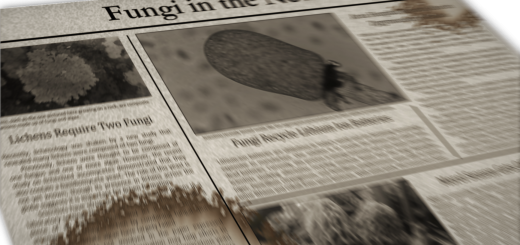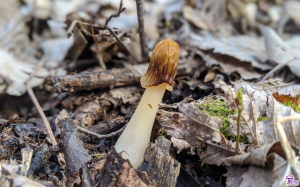#018: Characteristics of the Phyla Blastocladiomycota and Neocallimastigomycota
These two groups of fungi were recently taken out of the Chytridiomycota and elevated to the rank of phylum. Not surprisingly, both of these phyla produce motile spores (zoospores). The blastocladiomycota inhabit fresh water and soil and fill similar ecological roles to the core chytrids. Many of the blastocladiomycota are pathogens of small, aquatic animals (such as nematodes or water bears), algae, or semi-aquatic plants. The genus Allomyces contains saprobic species often used in experiments. In Allomyces the female gametes secrete the pheromone sirenin to attract the male gametes. The main difference between the blastocladiomycota and the chytridiomycota is that the blastocladiomycota produce an extensive mycelium. Furthermore, only certain cells at the tips of the hyphae produce sexual (male and female, haploid) or asexual (diploid) zoospores. In the core chytrids, the entire thallus is used to produce zoospores.
Similar to the blastocladiomycota, the neocallimastigomycota produce a mycelium with sporangia that do not take up the entire thallus. However, the mycelium of the neocallimastigomycota tends to be small. Neocllimastigomycota also produce multiflagellated zoospores (each spore has one or more flagella). One characteristic unique to the neocallimastigomycota is the presence of hydrogenosomes rather than mitochondria. These hydrogenosomes are actually reduced mitochondria that have adapted to their anaerobic environment. The neocallimastigomycota live in the rumens of ungulate animals, particularly the larger ones, although it is likely that they also inhabit other anaerobic aquatic environments. In animals’ rumens, they work to break down cellulose and other ingested matter. This group of fungi was only recently discovered in the late 1900s, so their true diversity is likely still unknown. One reason this is still the case is that these fungi have an unusually high A/T to G/C ratio (remember those DNA base pairs?) of roughly 4:1, which makes DNA sequencing very difficult in these organisms.
See Further:
Blastocladiomycota:
http://comenius.susqu.edu/biol/202/fungi/blastocladiomycota/default.htm
http://www.els.net/WileyCDA/ElsArticle/refId-a0023623.html
http://www.britannica.com/EBchecked/topic/16518/Allomyces
Neocallimastigomycota:
http://comenius.susqu.edu/biol/202/fungi/neocallimastigomycota/default.htm
http://www.shigen.nig.ac.jp/algae_tree/NeocallimastigomycotaE.html

![#059: Tremella mesenterica, Witch’s Butter [Archived]](https://www.fungusfactfriday.com/wp-content/themes/hueman/assets/front/img/thumb-medium-empty.png)






![#011: Characteristics of Kingdom Fungi [Archived]](https://www.fungusfactfriday.com/wp-content/themes/hueman/assets/front/img/thumb-small-empty.png)


1 Response
[…] around four chytrid divisions: Chytridiomycota, Monoblepharidomycota, Neocallimastigomycota (FFF#018), and Blastocladiomycota (FFF#018).10,11 Chytridiomycota in the new sense […]